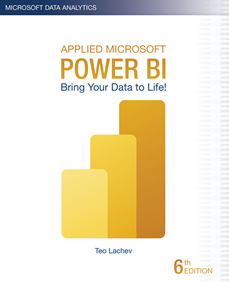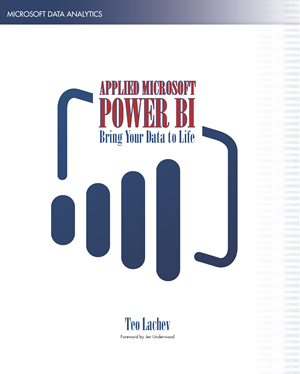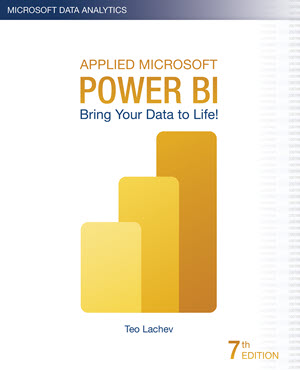-
Solving RLS Gotchas
March 8, 2021 / No Comments »

Scenario: You've created a beautiful, wide-open Tabular model. You use USERELATIONSHIP() to switch relationships on and off. Everything works and everyone is pleased. Then RLS sneaks in, such as when external users need access, and you must secure on some dimension table. You create a role, specify a row filter, test the role, and get greeted with: The UseRelationship() and CrossFilter() functions may not be used when querying '<dimension table>' because it is constrained by row-level security defined on '<dimension table>' or related tables. Analysis: There is a long-standing Tabular limitation that prevents USERELATIONSHIP for an added level of security which may be triggered even if USERELATIONSHIP doesn't enable a relationship on the security propagation path. This is done to prevent information disclosure in case there is some other active relationship (since UseRelationship would disable security propagation across the other relationship). Unfortunately, the current design is "no inactive relationship, no...
-
State Health Department Gains Reliable and Rapid COVID Insights
February 26, 2021 / No Comments »

Amidst the pandemic, the Houston Health Department (HHD) had another predicament to tackle. With lab results accumulating rapidly at one million cases per month, the vendor system they used for capturing and analyzing COVID data couldn't keep up. The SQL Server database had large tables with normalized name-value pairs for each question and answer received from the patient, and for each investigation result. Read our case study to learn how Prologika implemented a BI solution powered by SQL Server and Power BI to help HHD gain reliable and timely insights from COVID lab results.
-
Atlanta MS BI and Power BI Group Meeting on March 1st
February 21, 2021 / No Comments »

Please join us online for the next Atlanta MS BI and Power BI Group meeting on Monday, March 1st, at 6:30 PM. Your humble correspondent will discuss the business value of semantic models and implementation options for self-service BI and organizational BI. For more details, visit our group page. Download the slide deck from here. Presentation: Implementing Semantic Models Date: March 1st, 2021 Time 6:30 – 8:30 PM ET Place: Microsoft Teams Overview: A semantic model is a layer between the data source and end user. Data analysts create self-service semantic models with Power BI Desktop or Excel. BI developers implement organizational semantic models with SSDT, Tabular Editor, and PBI Desktop. Join this session to: · Learn what is a semantic model and how to choose between the self-service and organizational paths. · Understand the implementation options for self-service BI models and best modeling practices. · Find how organizational semantic...
-
Atlanta MS BI and Power BI Group Meeting on February 1st
January 31, 2021 / No Comments »

Please join us online for the next Atlanta MS BI and Power BI Group meeting on Monday, February 1st, at 6:30 PM. Paul Turley (MVP) will show you how to use Power Query to shape and transform data. For more details, visit our group page. Presentation: Preparing, shaping & transforming Power BI source data Date: February 1st, 2021 Time 6:30 – 8:30 PM ET Place: Click here to join the meeting Learn More | Meeting options Overview: In a business intelligence solution, data must be shaped and transformed. Your source data is rarely, if ever, going to be in the right format for analytic reporting. It may need to be consolidated into related fact and dimension tables, summarized, grouped or just cleaned-up before tables can be imported into a data model for reporting. · Where should I shape and transform data… At the source? In Power Query, or In the...
-
Calculation Group Gotchas
January 24, 2021 / No Comments »

The moment you add a calculation group to your model, Power BI sets DiscourageImplicitMeasures = True on the model. Although this property can trick you to be believe that they are still supported, you can't create implicit measures, such as by dragging a numeric field on the report to summarize that field. That's because implicit measures are created as inline calculations which calculation groups don't support. Also, there is a current issue where when you add a column from a calculation group to a filter, "Require single selection" is set to on and it can't be changed. Therefore, you won't be able to filter multiple calculation items, such as to present t only MTD, QTD, and YTD from a list of many items in your calculation group. As a workaround, you add a calculated column that flags the desired values and filter on it. You can vote to expedite the...
-
Rogue Q&A Queries
January 24, 2021 / No Comments »

I've noticed severe performance degradation after refreshing a Power BI Desktop model with some five million rows. The Power BI Desktop process showed a sustained 50-60 % utilization for minutes in the Windows Task Manager. I did a profiler trace and I saw expensive DAX queries like these: EVALUATE SELECTCOLUMNS(FILTER(VALUES('Sales'[PONumber]),LEN('Sales'[PONumber])<=100),"valueColumn",'Sales'[PONumber]) EVALUATE SELECTCOLUMNS(FILTER(VALUES('Sales'[SalesOrderNumber]),LEN('Sales'[SalesOrderNumber])<=100),"valueColumn",'Sales'[SalesOrderNumber]) EVALUATE SELECTCOLUMNS(FILTER(VALUES('Sales'[InvoiceNumber]),LEN('Sales'[InvoiceNumber])<=100),"valueColumn",'Sales'[InvoiceNumber]) As it turned out, Power BI Desktop autogenerates these queries when building a Q&A index. The 100-size limit is because Power BI wants to keep the index small. In addition, values that are longer than 100 characters are unlikely to be asked by the user. Why not check thd the maximum column value and skip the column? Power BI wants to skip instances that are too long but still index the remaining instances of the column. To avoid this performance degradation when modeling on the desktop you could disable the Q&A feature. This will also disable...
-
Applied Power BI Book (6th Edition)
January 2, 2021 / No Comments »

Happy New Year! I'm excited to announce the availability of the sixth edition of my Applied Microsoft Power BI book! When the first edition was published in January 2016, it was the first Power BI book at that time and it had less than 300 pages. Since then, I helped many companies adopt or transition to Power BI and taught hundreds of students. It's been a great experience to witness the momentum surrounding Power BI and how the tool has matured over time. As a result, the book also got thicker and it almost doubled in size. However, I believe what's more important is that this book provides systematic, yet dependent, view by showing what Power BI can do for four types of users (business users, analysts, pros, and developers). To my understanding, this is the only Power BI book that gets annual revisions to keep it up to date...
-
Atlanta MS BI and Power BI Group Meeting on January 4th
December 31, 2020 / No Comments »

Please join us online for the next Atlanta MS BI and Power BI Group meeting on Monday, January 4th, at 6:30 PM. James Serra (Big Data/Data Warehouse Evangelist at Microsoft) will share best practices around staging data in an organizational data lake. For more details, visit our group page and don't forget to RSVP (fill in the RSVP survey if you're planning to attend). Presentation: Data Lake Overview Date: January 4th, 2020 Time 6:30 – 8:30 PM ET Place: Click here to join the meeting Learn More | Meeting options Overview: The data lake has become extremely popular, but there is still confusion on how it should be used. In this presentation I will cover common big data architectures that use the data lake, the characteristics and benefits of a data lake, and how it works in conjunction with a relational data warehouse. Then I’ll go into details on using Azure Data...
-
Microsoft Dataverse: A Verse Without Rhymes
December 30, 2020 / No Comments »

The cloud is supposed to make things easier, right? Well, not necessarily, as a client and I have recently discovered. They use Dynamics Online 365 and they are facing long refresh times for Power BI datasets that import data from Dynamics. Dynamics saves its data in an Azure SQL Database, which now goes by the name Dataverse (previously known as Common Data Service for Apps or CDS-A). I wrote two years ago about the pros and cons of CDS-A. The ugly award back then went to getting the data out of Dynamics. I wrote "For years people were complaining that after migrating from the on-premises Dynamics to the cloud, they lost the ability to connect to its database directly and they had to rely on the REST APIs (slow) or Data Export Service to export the data to an SQL Server Database (fast but requires additional effort and budget)." Have...
-
The Science of Counting
December 4, 2020 / No Comments »

I'm watching the witness testimonies for election irregularities in Georgia (the state where I live). I'm shocked about how this election became such a mess and international embarrassment. United States spent 10 billion on the 2020 election. Georgia alone spent more than 100 million on some machines the security experts said can be hacked in minutes. If we add the countless number of manhours, investigations, and litigations, these numbers will probably double by the time the dust settles down. What did we get back? Based on what I've heard, 50% of Americans believe this election is rigged, just like 50% believed so in 2016. The 2020 election added of course more options for abuse because of the large number of mail-in ballots. It's astonishing how manual and complicated the whole process is, not to mention that each state does things differently. But the more human involvement and moving parts, the...

 We offer onsite and online Business Intelligence classes! Contact us about in-person training for groups of five or more students.
We offer onsite and online Business Intelligence classes! Contact us about in-person training for groups of five or more students.



